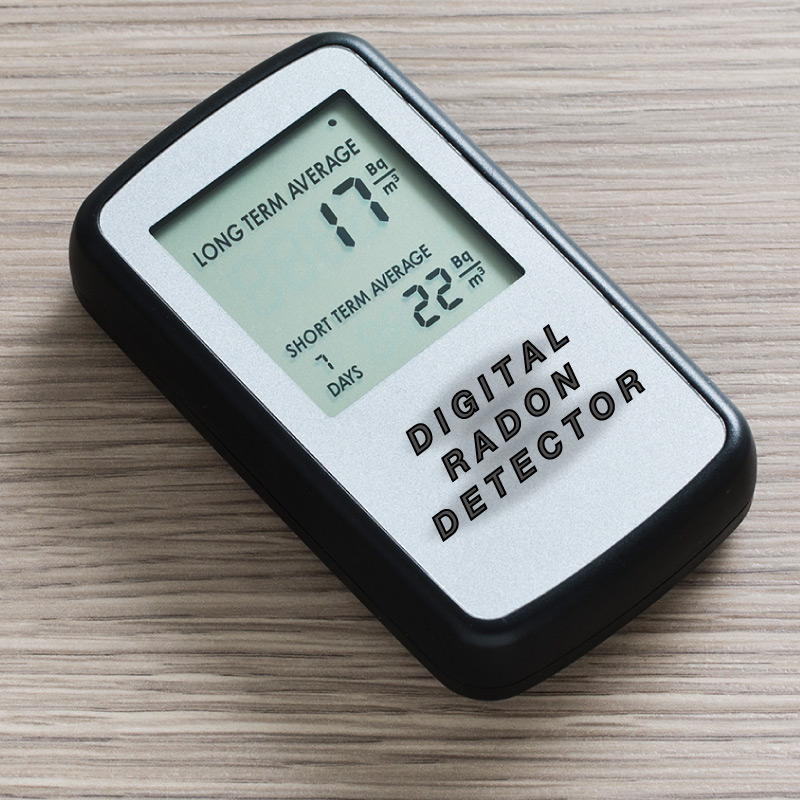If natural radiation isn’t dangerous, why do some homes and buildings need “radon detectors”?
Good question, and let’s start by talking about what radon and “radon detectors” are. Radon is a chemical element (number 86 in the periodic table of elements) that exists naturally within the Earth, and because it is a gas, it enters the air when it leaks out of the ground. Radon also happens to be radioactive, and a radon detector is used to find out how much radon is the air around you. You can buy a radon detector at almost any hardware store (Figure 1).
The amount of radon varies from place to place around the world, but it is almost always too small to be harmful in in the outside air. Indoor air can be a different story, however, because the walls and roof of a building can trap radon gas inside. As a result, in places where radon is more common, houses and buildings can end up containing enough radon gas that it can become harmful, even though the level in the outside air is safe. In fact, radon gas that people breathe inside homes and buildings is thought to be the world’s second-leading cause of lung cancer, after smoking.
Fortunately, most people don’t have a radon problem to begin with, because in most places the ground doesn’t contain enough radon to pose a potential problem. Therefore, the first step in “radon safety” is to find out whether a significant amount of radon is present in your local geology ; this information should be readily available from local officials or on the web. If it does, then a radon detector will tell you whether the radon level in your home or building is high enough to be of concern.
In the event that your home or building does have a radon problem, the problem can be solved with what is called a “radon mitigation” system (Figure 2). These systems typically collect the radon gas before it enters the building, using a fan to blow the gas into the outside air.
To summarize: outdoor radon is virtually always safe, but in some cases it is possible for radon to become a problem indoors. In those cases, you should install a radon mitigations system to solve the problem.

